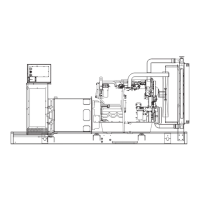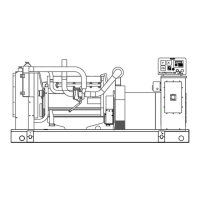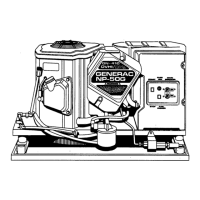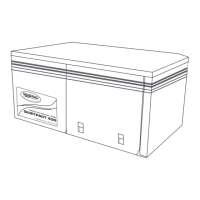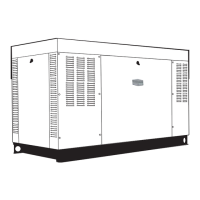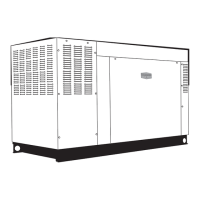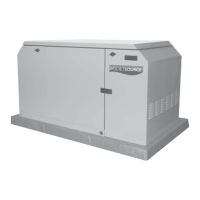Operation
36833 C MGG100M Operating Manual 33
Grounding Unit
After connecting fuel sources to the unit, ensure the unit is properly grounded.
VERIFY THE SYSTEM IS PROPERLY GROUNDED BEFORE APPLYING POWER. DO
NOT APPLY AC POWER BEFORE CONFIRMING THAT GROUNDS ARE CONNECTED.
ELECTRICAL SHOCK CAN CAUSE SERIOUS OR FATAL INJURY. THE NEC MAY
REQUIRE THAT THE FRAME AND EXPOSED CONDUCTIVE SURFACES (METAL
PARTS) BE CONNECTED TO AN APPROVED EARTH GROUND. LOCAL REGULA-
TIONS MAY ALSO REQUIRE PROPER GROUNDING OF THE UNIT.
Connecting Loads
After unit is properly grounded, electrical loads can be safely connected to the unit. Loads can be connected to the
following.
• Customer convenience receptacles
• Cam locks
See Generator Output Connections for more information.
Prestart Inspection
The inspection below is only required once: after the initial install of the unit on the work site.
Verify battery disconnect switch is turned to ON.
Verify unit is positioned stably.
Verify proper clearance exists on all sides and top of enclosure.
Verify unit is a safe distance from flammable or combustible material.
Verify no load is connected to unit.
Inspect engine and genset: verify there are no loose wires or components. Tighten if necessary.
Inspect generator windings for moisture: verify they are thoroughly dry.
Do not apply high voltage to windings in moisture-saturated conditions. Serious damage to
genset and property can result. (000153)
Note: Units that have been in transit or storage for long time periods may have been subject to extreme
temperature and moisture changes, which can cause excessive condensation. Thoroughly dry the
generator windings before bringing the genset up to full nameplate voltage.
Verify engine oil level is between ADD and FULL.
Verify level of engine coolant in the overflow jug is between ADD and FULL.
Verify the key switch is turned to OFF.
Verify fuel valves are open, with correct pressure and flow rate.
Inspect fuel lines and connections for gas leaks: Check inside unit and check pipes connecting fuel
sources to unit. Repair any leaks and breaks.
Verify fuel connections comply with applicable building codes. Remove tools, rags, and other foreign
material from inside unit.
Close all enclosure doors, except the control panel door; and ensure no hands are inside unit
enclosure when it starts.
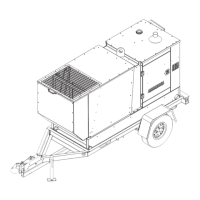
